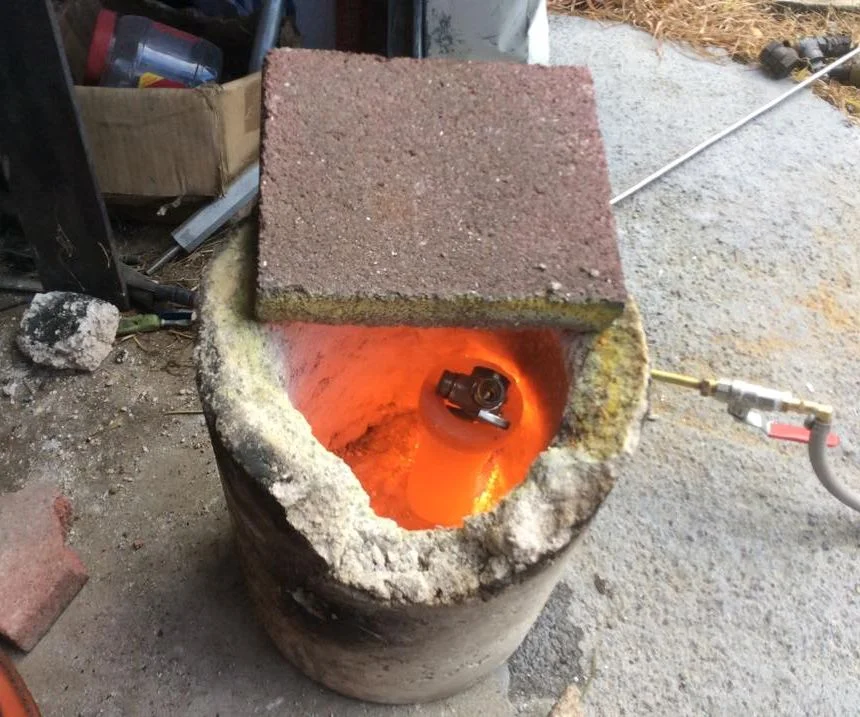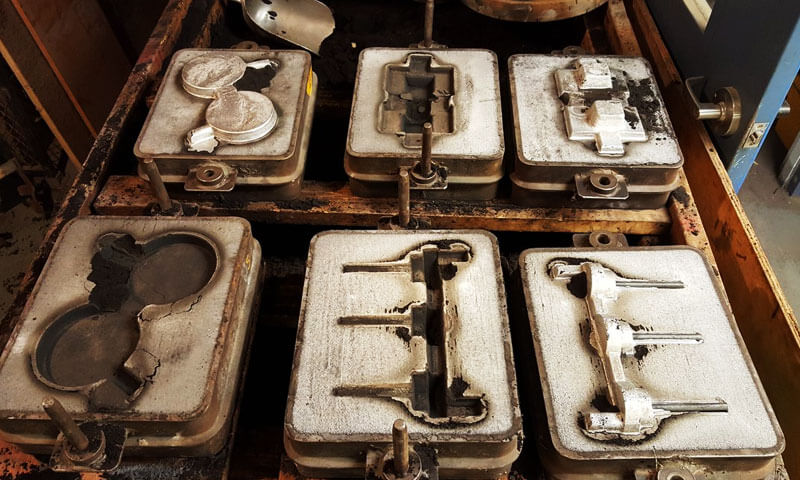Exploring the Essential Applications and Use Light Weight Aluminum Foundry in Modern Production
Light weight aluminum factories play an important role in contemporary production, offering diverse markets with their unique residential properties. From auto components that improve fuel performance to aerospace frameworks that focus on weight, aluminum's versatility appears. Its applications include building and consumer electronic devices, highlighting its durability and power effectiveness. The developments in aluminum spreading strategies and future patterns require a closer exam, as they may redefine its influence on manufacturing.
The Duty of Aluminum Foundries in Automotive Production
As the automotive market progressively focuses on light-weight materials to boost fuel performance and efficiency, light weight aluminum shops have come to be essential contributors to producing procedures. These foundries specialize in creating elements that meet the rigid demands of modern-day automobiles, such as engine blocks, transmission real estates, and structural aspects. Aluminum's beneficial homes-- such as high strength-to-weight proportion, deterioration resistance, and outstanding thermal conductivity-- make it an optimal option for auto applications.
In addition, aluminum foundries use advanced casting strategies, including die spreading and sand casting, to create detailed and durable parts. This ability permits producers to maximize layouts for efficiency while lessening weight. Using light weight aluminum also supports sustainability objectives, as it is very recyclable and lowers power usage in vehicles. By facilitating the combination of light weight aluminum into vehicle style, foundries play a critical function fit the future of the automobile industry, promoting effectiveness and advancement across the board.
Aerospace Applications: Lightweight Solutions for Flight
Aluminum shops play a considerable role in the aerospace field, where the demand for lightweight materials is critical for boosting gas effectiveness and efficiency in aircraft. The special properties of aluminum, including its high strength-to-weight proportion and rust resistance, make it an excellent option for numerous aerospace parts. These elements consist of architectural parts, engine coverings, and landing gear, which contribute to total airplane performance.
Making use of light weight aluminum alloys, especially those created through innovative casting strategies, enables the production of intricate styles and intricate shapes while lessening weight. Furthermore, light weight aluminum's recyclability aligns with the aerospace sector's sustainability objectives, reducing ecological impact. With constant advancements in aluminum factory technologies, manufacturers can optimize manufacturing procedures, causing boosted effectiveness and minimized expenses. As the aerospace industry increasingly focuses on technologies that boost performance, light weight aluminum factories will stay important to establishing lightweight services for modern-day flight.
Building and Building And Construction: Enhancing Architectural Honesty
In the building and building sector, a significant emphasis is placed on boosting structural integrity via using aluminum. Known for its high strength-to-weight proportion, aluminum provides durability without jeopardizing on weight, which is essential in contemporary building designs. Its resistance to corrosion better assures longevity, making it a suitable material for different structural parts, consisting of beam of lights, frames, and cladding.
Aluminum likewise promotes cutting-edge layout opportunities, enabling engineers and engineers to develop aesthetically pleasing frameworks while maintaining security requirements. The product's adaptability allows its application in both residential and business jobs, from skyscrapers to bridges. Additionally, improvements in light weight aluminum shop methods have actually boosted the accuracy of light weight aluminum elements, guaranteeing they satisfy strict building regulations. In general, the integration of aluminum in construction not only boosts structural stability however also adds to lasting structure practices, given its recyclability and energy-efficient manufacturing techniques.
Consumer Electronics: The Rise of Aluminum in Innovation
In the domain of customer electronics, light weight aluminum has gained importance as a result of its lightweight style advantages and premium thermal conductivity. This shift not only improves product mobility but also boosts gadget performance by properly dissipating warm. As modern technology remains to advance, the duty of light weight aluminum in producing smooth and reliable tools is progressively substantial.
Lightweight Design Advantages
As consumer electronics develop, the need for lightweight yet resilient products has actually risen, making light weight aluminum a significantly preferred option among suppliers. Its reduced thickness allows for the creation of sleek tools that are easy to lug and make use of, considerably enhancing portability. The strength-to-weight ratio of aluminum guarantees that items can stand up to daily deterioration without compromising efficiency. In addition, the pliability of aluminum allows manufacturers to develop elaborate forms and forms, additionally adding to cutting-edge looks and functionality. This lightweight characteristic also plays an essential function in power effectiveness, as lighter devices need less energy to operate. Because of this, light weight aluminum not only fulfills the advancing aesthetic demands but likewise straightens with the modern-day focus on sustainability in customer electronics.
Thermal Conductivity Conveniences
Thermal conductivity is a crucial consider the efficiency of consumer electronic devices, and aluminum excels in this domain. Its high thermal conductivity permits effective heat dissipation, which is important for preserving optimal operating temperature levels in tools such as mobile phones, laptop computers, and gaming consoles. By facilitating rapid warmth move away from delicate elements, aluminum aids avoid getting too hot, thus improving efficiency and extending gadget longevity. The light-weight nature of light weight aluminum matches its thermal properties, making it an excellent option for portable technology. As manufacturers progressively prioritize performance and power performance, aluminum's duty in thermal monitoring comes to be a lot more significant, bring about its expanding adoption in modern-day electronic designs. This fad emphasizes light weight aluminum's significance in consumer electronics technology.
Marine Sector: Corrosion Resistance in Harsh Settings
Corrosion resistance is an essential consider the aquatic industry, where tools and structures are consistently revealed to rough saltwater settings. Light weight aluminum, particularly in its alloy types, offers significant benefits in this respect. Its all-natural oxide layer offers a protective barrier that prevents deterioration, making it optimal for vessels, docks, and other marine applications.
Marine-grade light weight aluminum alloys, such as 5083 and 6061, are especially created to hold up against the corrosive impacts of deep sea and climatic conditions. These alloys not only resist corrosion but also maintain structural integrity and toughness with time. Applications range from hulls and superstructures of ships to elements in offshore systems.
The lightweight nature of light weight aluminum additional enhances its suitability, allowing improved fuel effectiveness and ease of handling - Aluminum Casting. As the marine sector continues to concentrate on toughness and performance, aluminum remains an important product selection for withstanding deterioration sought after aquatic settings
Developments in Aluminum Spreading Techniques
While traditional aluminum casting approaches have served the sector well, recent advancements are transforming the landscape of light weight aluminum production. Strategies such as 3D printing of molds and cores are gaining grip, permitting for rapid prototyping and lowered preparations. This development enables manufacturers to develop complicated geometries that click here were formerly difficult to achieve with traditional spreading approaches. Furthermore, improvements in die-casting innovation, consisting of making use of high-pressure die-casting (HPDC), have actually improved the accuracy and surface finish of cast aluminum elements, resulting in boosted performance in different applications.
Furthermore, the adoption of financial investment spreading has permitted for greater layout flexibility and decreased material waste. aluminum foundry. Advancements in alloy compositions are likewise substantial, as they improve mechanical homes and corrosion resistance. In general, these growths not only improve manufacturing procedures yet likewise add to more sustainable methods within the light weight aluminum foundry market, making it versatile to the progressing needs of modern-day manufacturing
Future Trends in Aluminum Factory Manufacturing
The future of light weight aluminum factory manufacturing is poised for considerable change with automation, improving efficiency and precision in making procedures. Sustainable methods are significantly coming to be a concern, as foundries look for to minimize their environmental impact while satisfying growing regulative needs. Additionally, advancements in alloy advancement will certainly make it possible for the production of stronger, lighter products tailored for varied applications, driving development in the industry.
Automation in Factory Processes

Sustainable Production Practices
A growing emphasis on lasting manufacturing techniques is improving the future of aluminum factory manufacturing. Market leaders are progressively adopting energy-efficient innovations and recycling campaigns to minimize waste and lower carbon impacts. Making use of recycled aluminum substantially lowers power usage contrasted to primary light weight aluminum production, making it a preferred option for eco mindful suppliers. Furthermore, innovative spreading strategies are being created to boost material performance and reduce exhausts. Firms are also spending in renewable resource resources, such as solar and wind, to power their operations sustainably. aluminum foundry. By integrating these techniques, the aluminum foundry market not only meets governing needs but additionally reacts to consumer demand for greener products, eventually leading the way for a much more lasting production landscape
Advanced Alloy Development
Developments in aluminum alloy development are established to play a significant duty in the future of foundry production, especially as sustainability and performance demands escalate. The industry is increasingly concentrating on creating high-strength, lightweight alloys that can stand up to extreme conditions while minimizing environmental effect. Scientists are checking out cutting-edge make-ups, such as aluminum-lithium and aluminum-scandium alloys, which assure improved mechanical residential properties and reduced weight. Furthermore, the assimilation of advanced production methods, consisting of additive production and precision spreading, permits more complex geometries and decreased product waste. As governing stress and customer choices shift towards greener alternatives, the development of recyclable and energy-efficient alloys will be crucial. The future landscape of aluminum shop production depends upon these improvements in alloy technology.

Regularly Asked Concerns
What Are the Ecological Impacts of Light Weight Aluminum Factory Operations?
Aluminum shop procedures can lead to substantial environmental effects, consisting of greenhouse gas emissions, power usage, and waste generation. Additionally, improper management of toxins may cause dirt and water contamination, influencing neighborhood communities and areas.
Exactly How Does Aluminum Recycling Affect Foundry Processes?
Aluminum recycling enhances factory procedures by providing a cost-effective raw product, lowering power consumption and exhausts. This sustainable practice increases efficiency, decreases waste, and supports the circular economic climate, profiting both manufacturers and the environment.
What Safety And Security Measures Are Executed in Aluminum Foundries?
Aluminum foundries implement different safety and security measures, consisting of personal safety devices, proper air flow systems, normal safety and security training, fire avoidance methods, and tools maintenance treatments to minimize hazards and guarantee a safe functioning setting for all employees.
Exactly How Do Foundries Make Sure Quality Assurance in Light Weight Aluminum Spreading?
Foundries ensure quality assurance in aluminum spreading via extensive material assessments, accurate temperature level surveillance, standard treatments, and normal testing of actors items. These actions help maintain uniformity, lower defects, and satisfy industry requirements efficiently.
What Are the Expense Consider Light Weight Aluminum Factory Manufacturing?
Cost aspects in light weight aluminum factory production consist of resources rates, energy usage, labor costs, tools upkeep, and overhead costs. In addition, production volume and intricacy of designs significantly affect general manufacturing prices and productivity.
As the automobile market increasingly focuses on lightweight products to boost gas performance and performance, aluminum foundries have actually ended up being crucial factors to manufacturing processes. Aluminum foundries play a substantial role in the aerospace industry, where the need for light-weight materials is extremely important for improving gas performance and efficiency in aircraft. Furthermore, advancements in light weight aluminum foundry techniques have improved the precision of aluminum elements, ensuring they fulfill rigid structure codes. While traditional light weight aluminum spreading techniques have offered the sector well, current innovations are transforming the landscape of aluminum manufacturing. The usage of recycled light weight aluminum significantly decreases energy consumption compared to main aluminum manufacturing, making it a favored option for environmentally aware producers.